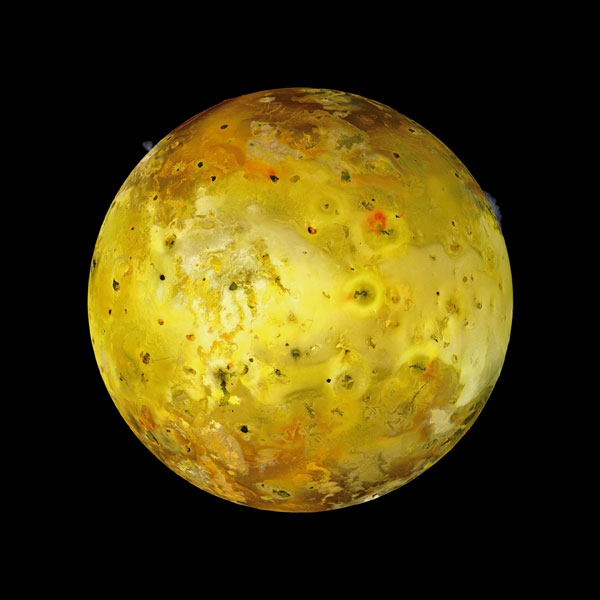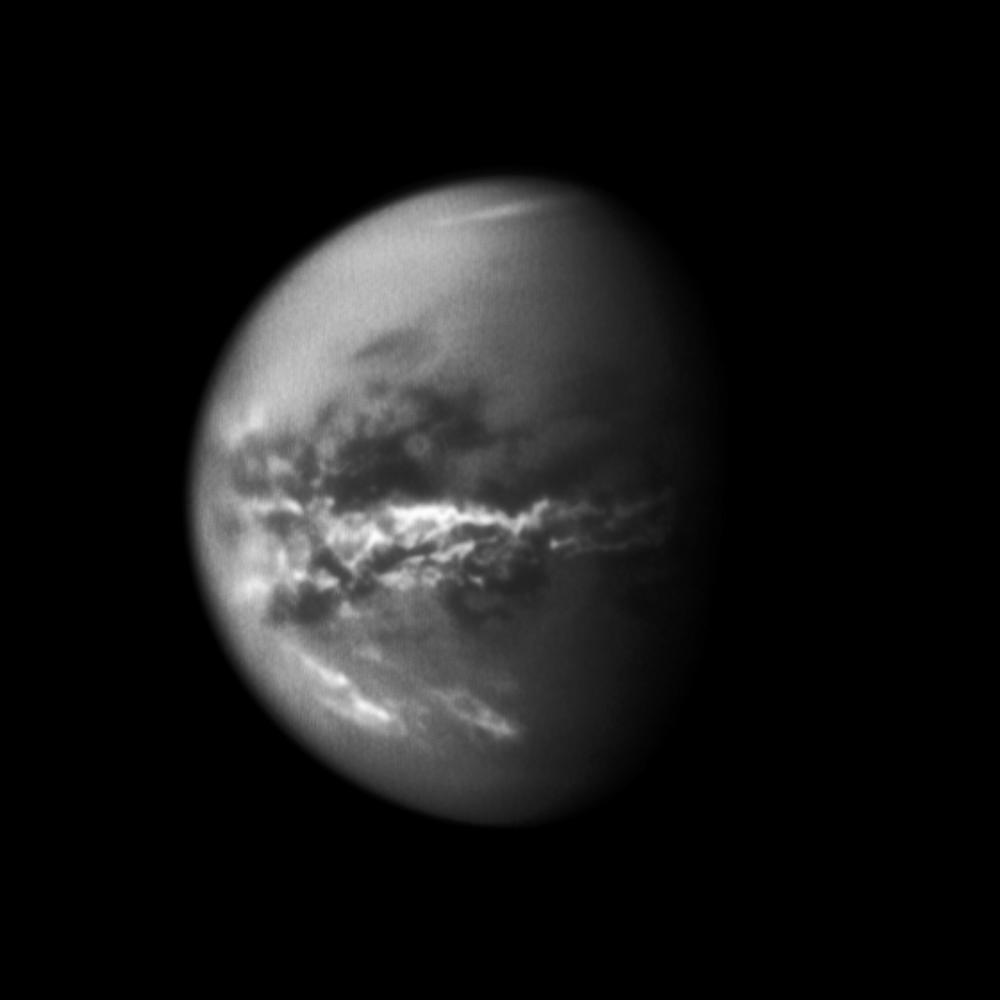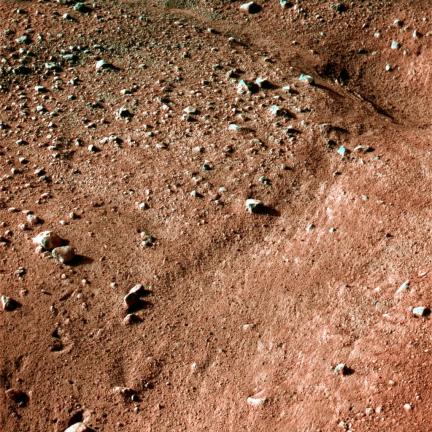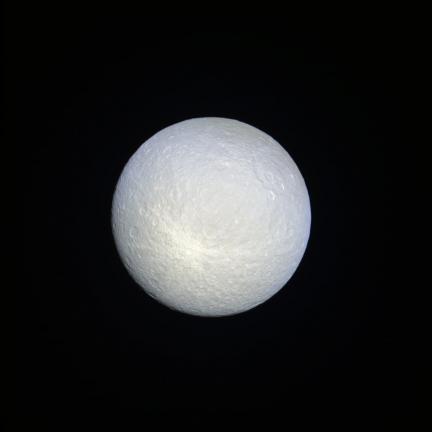Webb’s latest image is the clearest look at Neptune's rings in 30+ years, and our first time seeing them in infrared light. Take in Webb's ghostly, ethereal views of the planet and its dust bands, rings and moons: https://go.nasa.gov/3RXxoGq #IAC2022
Webb’s Jupiter
So this is “false color” becuase it is infrared (like all Webb images) and made from only two filters orange and cyan. However, the detail is incredible. That dot is tiny Amalthea at the left and— yes… that is Jupiter’s elusive ring. According to researcher Thierry Fouchet, “This one image sums up the science of our Jupiter system program, which studies the dynamics and chemistry of Jupiter itself, its rings, and its satellite system,”.
Image Courtesy of NASA/JPL-Caltech/SwRI
Kind of Cool Image of Io from Juno
The brightest spot is a radiation signature, but all the rest are thought to be active volcanos on the Io surface. The moons are not a primary target of the Juno mission, but they do occasionally take a peek to try and monitor such phenomenon at Io. Later when the mission is extended, Juno will explore the full Jupiter system with its rings and moons. Multiple rendezvous are planned for Ganymede, Europa, and Io.
Image is not visible light, but taken with an x-ray camera.
Saturnati XXXI
 Okay, so it is not totally real. An IR filter was added to the normal RGB files to exaggerate the clouds. Also made the rings appear red. But we couldn’t find a version of this image without the added filter. So — it is about 80% true color. Seen on The Planetary Society image library by Judy Schmidt.
Okay, so it is not totally real. An IR filter was added to the normal RGB files to exaggerate the clouds. Also made the rings appear red. But we couldn’t find a version of this image without the added filter. So — it is about 80% true color. Seen on The Planetary Society image library by Judy Schmidt.
Malmer’s Model
 It is hard to imagine that this is a 3D model by Matthias Malmer. Not a series of 120 images released by the Rosetta team and stitched into a movie, but rendered from just 4 images. I processed this quick animated gif and looking at the individual frames, cannot detect the difference between the individual frames and still images taken by Rosetta.
It is hard to imagine that this is a 3D model by Matthias Malmer. Not a series of 120 images released by the Rosetta team and stitched into a movie, but rendered from just 4 images. I processed this quick animated gif and looking at the individual frames, cannot detect the difference between the individual frames and still images taken by Rosetta.
Discover’s Best of Amateur Imagers
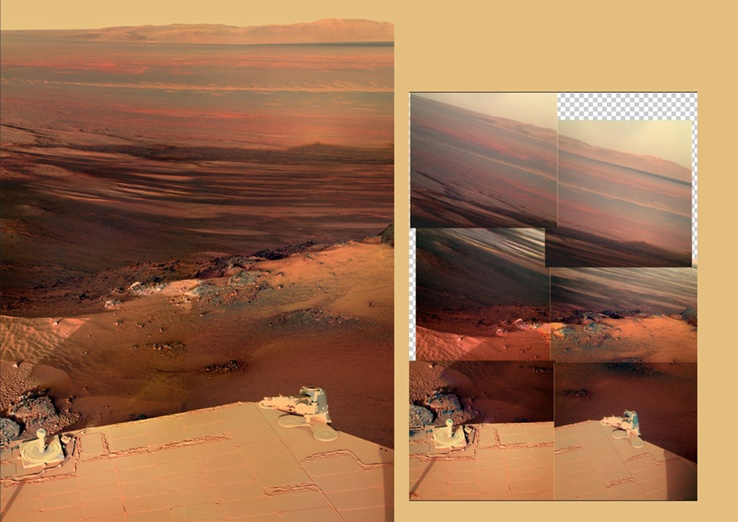 Discover online has an article today about some of the best in amateur space imaging. Many of which have been featured here on Wanderingspace before like Gordan Ugarkovic, Emily Lakdawalla and Bjorn Jonsson to name a few. The last item from Bill Dunford of Riding With Robots is an image that he actually suggested NASA point their HiRise cameras at that location. He suspected they might find something interesting there and they did —flash water movement and evidence of avalanches.
Discover online has an article today about some of the best in amateur space imaging. Many of which have been featured here on Wanderingspace before like Gordan Ugarkovic, Emily Lakdawalla and Bjorn Jonsson to name a few. The last item from Bill Dunford of Riding With Robots is an image that he actually suggested NASA point their HiRise cameras at that location. He suspected they might find something interesting there and they did —flash water movement and evidence of avalanches.
In Saturn’s Rings Official Trailer
The long awaited official trailer for “In Saturn’s Rings” has been unleashed. Looking forward to this film for over three years now.
Planetfall
Having followed the activities of a small army of freelance space imagers that lurk in various places on the internet for about 10 years now — it is truly unusual for me to come across images that I know I have not seen before. Michael Benson’s exhibit titled, “Planetfall” at the American Association for the Advancement of Science offers offer fresh views from missions as old as Viking and as new as Cassini. What originally caught my attention was an image of an actively spewing Enceladus that is exposed in both Sun and Saturn shine — a view I have surely seen before, but never so detailed or dramatic. Even more surprising and rare is a new global composite view of Uranus with a complete and continuous ring taken by Voyager almost 30 years ago.
The show ends soon (June 28, 2013) and is located in Washington DC.
Sun Goes Boom (Not Really, No Sound in Space)
Titan Looking Very Earthlike
Dueling Enceladian Light Sources
 Gordan U compiled this image of Enceladus lit both by Sun and Saturnshine. The side lit by reflected light from Saturn is in infrared and in the original appeared in a green hue. I took some liberties and imaged it as I would imagine it really would appear to the eye in Saturn’s more orange/yellow hues.
Gordan U compiled this image of Enceladus lit both by Sun and Saturnshine. The side lit by reflected light from Saturn is in infrared and in the original appeared in a green hue. I took some liberties and imaged it as I would imagine it really would appear to the eye in Saturn’s more orange/yellow hues.
Worth noting tomorrow the images are due in from Cassini’s closest approach yet through its plumes. Hoping for some amazing material.
Mariner 10 Re-Imaging of Venus
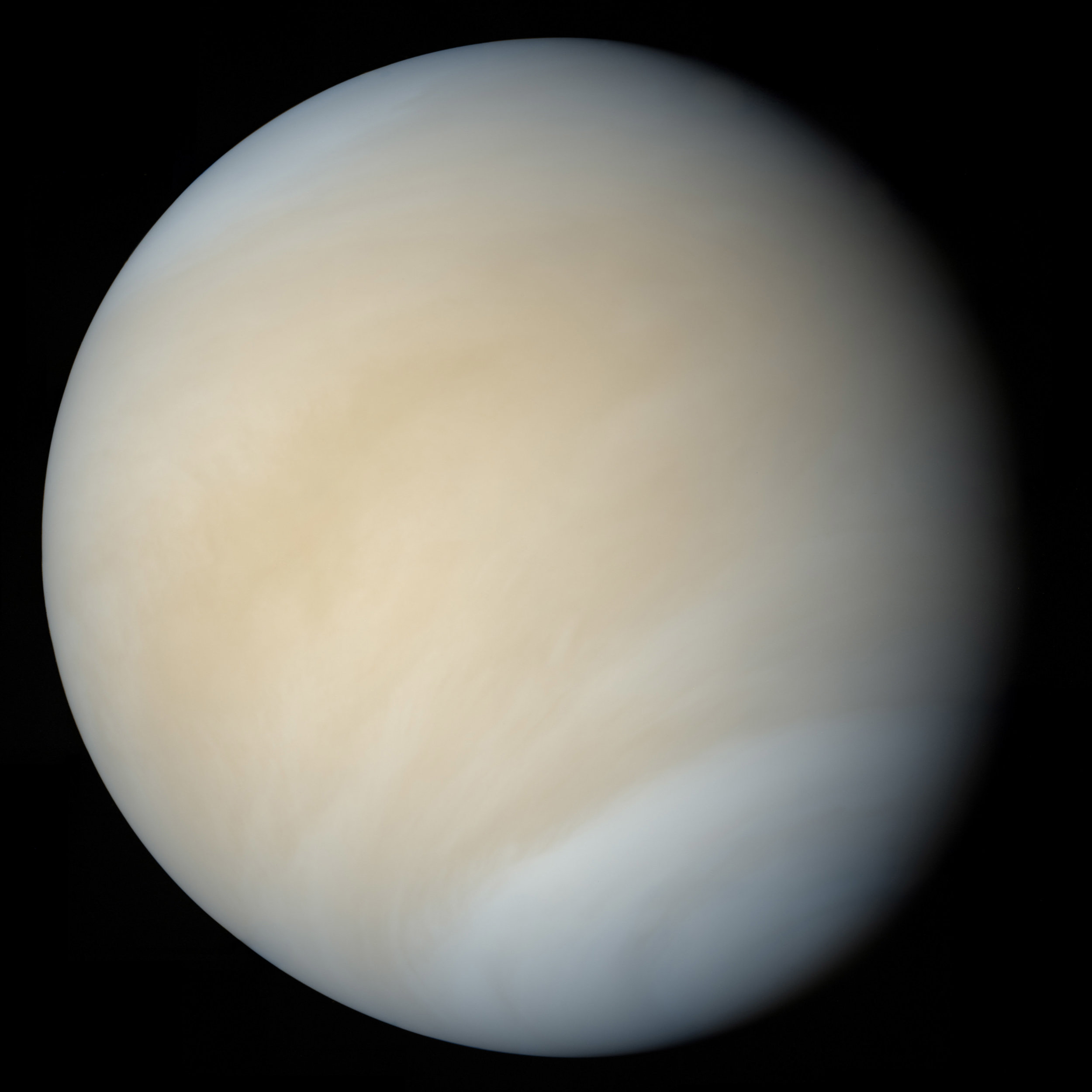 Been meaning to catch up on a few odds and ends lying around. This image of Venus was re-worked from Mariner 10 images by Mattias Malmer somewhere around 2005. It is an attempt at showing Venus in natural light and is far better than the version previously used as our “portrait” image for Venus. The issue is that Mariner 10 images only allow one to do that by taking some liberties with UV data. According to Malmer, “I think that if I were to make an even blander version of the this image it would be close enough to reality”.
Been meaning to catch up on a few odds and ends lying around. This image of Venus was re-worked from Mariner 10 images by Mattias Malmer somewhere around 2005. It is an attempt at showing Venus in natural light and is far better than the version previously used as our “portrait” image for Venus. The issue is that Mariner 10 images only allow one to do that by taking some liberties with UV data. According to Malmer, “I think that if I were to make an even blander version of the this image it would be close enough to reality”.
See the original 2005 post on unmannedspaceflight.com where you can get this image at 4000x4000 resolution. Time for a wallpaper update.
More Gordan U

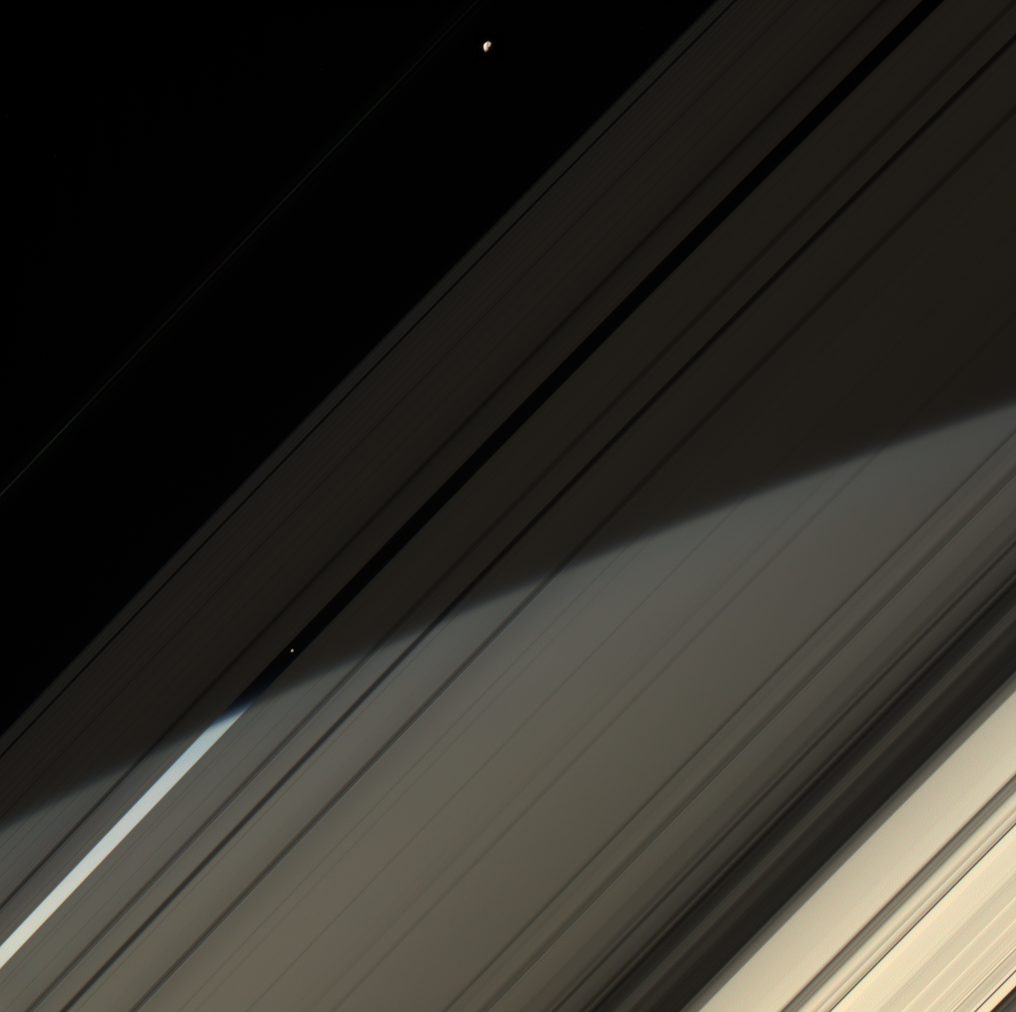

 Some recent posts from Gordan Ugarkovic. The first is just gorgeous, the second featuring Prometheus and Pan in the gaps, the third is also just real pretty and the 4th is two sides of Enceladus. The 2nd and 4th of these images are false color which we publish less often, but these were just too nice to deny.
Some recent posts from Gordan Ugarkovic. The first is just gorgeous, the second featuring Prometheus and Pan in the gaps, the third is also just real pretty and the 4th is two sides of Enceladus. The 2nd and 4th of these images are false color which we publish less often, but these were just too nice to deny.
Saturnati XX
MAD Infrared Jupiter Image
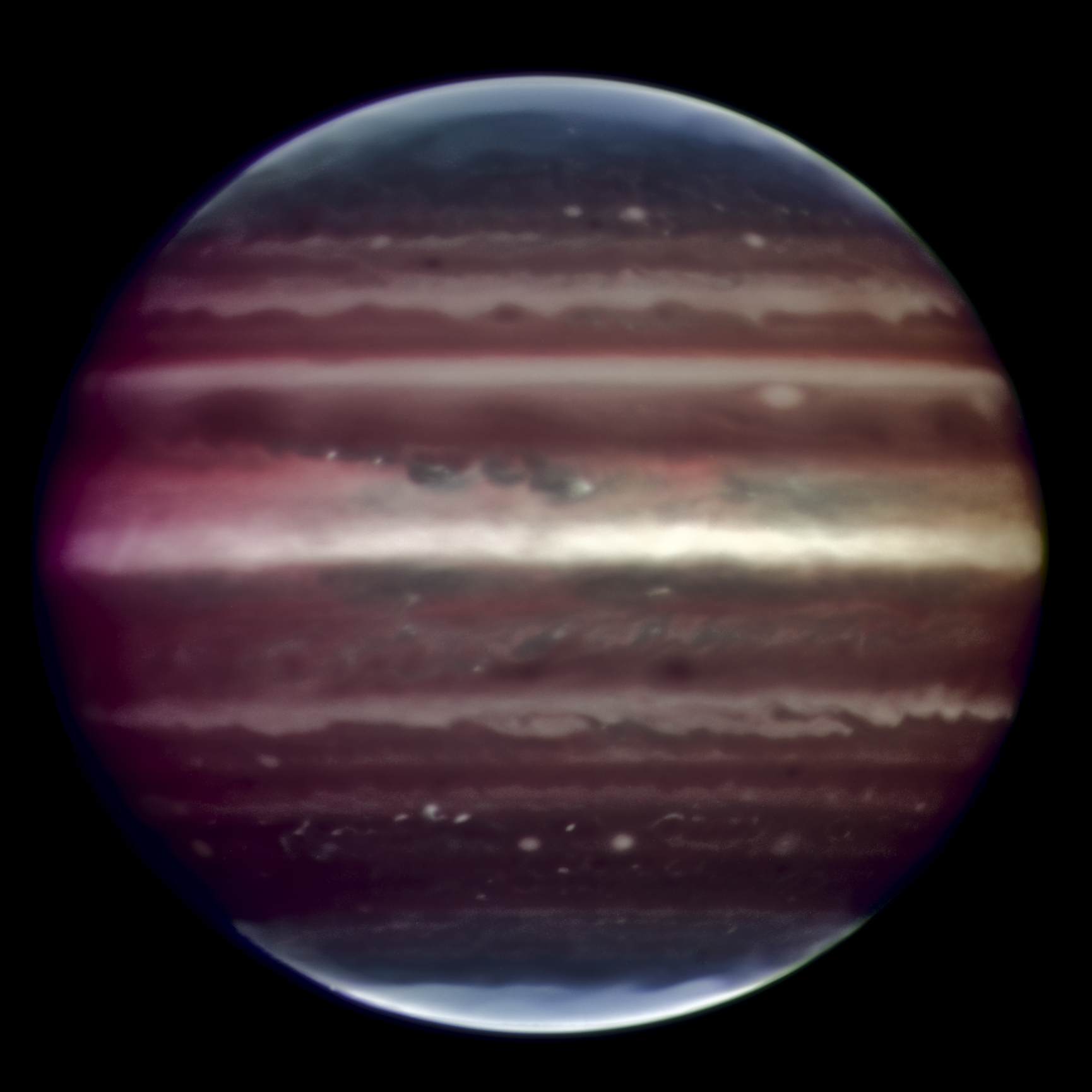 “Jupiter in infrared light, taken on the night of 17 August 2008 with the Multi-Conjugate Adaptive Optics Demonstrator (MAD) prototype instrument mounted on ESO’s Very Large Telescope. This false colour photo is the combination of a series of images taken over a time span of about 20 minutes, through three different filters (2, 2.14, and 2.16 microns).”
“Jupiter in infrared light, taken on the night of 17 August 2008 with the Multi-Conjugate Adaptive Optics Demonstrator (MAD) prototype instrument mounted on ESO’s Very Large Telescope. This false colour photo is the combination of a series of images taken over a time span of about 20 minutes, through three different filters (2, 2.14, and 2.16 microns).”
See Centauri Dreams for more.
Express Way to Venus
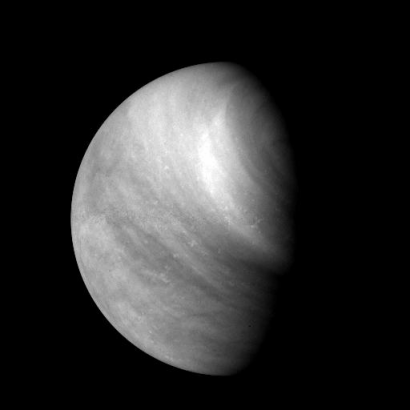 Too few images come from the Venus Express mission. Probably has something to do with its featurelessness. The only way to see this level of detail in the Venusian clouds is by using alternative flase-color imaging. These frames were taken in ultraviolet light.
Too few images come from the Venus Express mission. Probably has something to do with its featurelessness. The only way to see this level of detail in the Venusian clouds is by using alternative flase-color imaging. These frames were taken in ultraviolet light.
False Color From Phoenix
Titan Descent in Stages
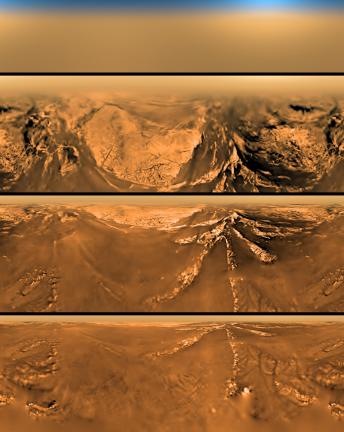 Best compilation of Titan colorized descent images I have seen yet from NASA. I do suspect the actual color of Titan - on the ground - would look less metallic than these do. All the color seen here is based upon educated guesses and applied over the black and white images returned by Huygens. There were no real color images taken by Huygens during descent.
Best compilation of Titan colorized descent images I have seen yet from NASA. I do suspect the actual color of Titan - on the ground - would look less metallic than these do. All the color seen here is based upon educated guesses and applied over the black and white images returned by Huygens. There were no real color images taken by Huygens during descent.
I plan to do a long post on some amazing renders made for an Italian magazine based upon actual imagery and data… but I am so busy these days. It will go up eventually.
Phobos as Seen by MRO
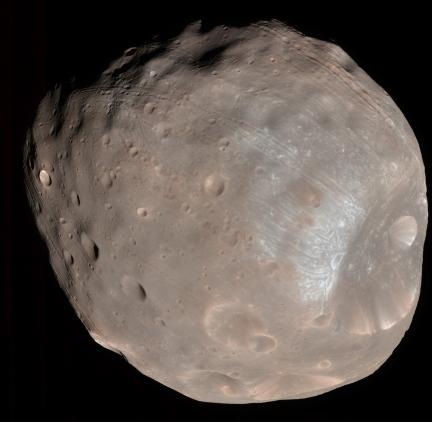 This is a semi-false color image as explained on NASA’s site, “The High Resolution Imaging Science Experiment (HiRISE) camera on NASA's Mars Reconnaissance Orbiter took this image of the larger of Mars' two moons, Phobos… on March 23, 2008. Taken from a distance of about 6,800 kilometers (about 4,200 miles). It is presented in color by combining data from the camera's blue-green, red, and near-infrared channels”.
This is a semi-false color image as explained on NASA’s site, “The High Resolution Imaging Science Experiment (HiRISE) camera on NASA's Mars Reconnaissance Orbiter took this image of the larger of Mars' two moons, Phobos… on March 23, 2008. Taken from a distance of about 6,800 kilometers (about 4,200 miles). It is presented in color by combining data from the camera's blue-green, red, and near-infrared channels”.
So there is some exaggeration of color here by including the infrared. I am guessing that is what is making the contrast between the reddish hues and those whitish marking at the edge of Stickney Crater. Click to see the hi-res… this may be the sharpest most detailed of Phobos I have seen yet.




